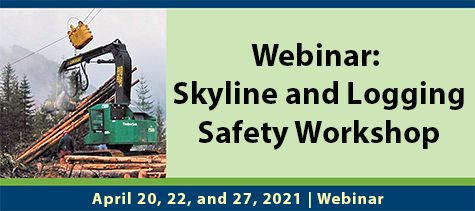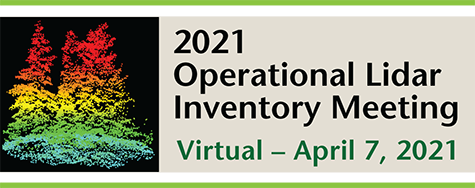Click here to view/download the 2021 agenda (PDF)
SUNDAY, JUNE 20, 2021
4:00 pm – 6:00 pm Happy Hour Drop-in on Zoom, Meet old friends and make new ones – zoom break out rooms will be available for small groups
MONDAY, JUNE 21, 2021
9:00 – 9:05 Meeting opening and overview – Bianca Eskelson
IUFRO session: Linking growth models with remote sensing data – Moderator: Woongsoon Jang
9:05 – 9:25 CanopyShotNoise – An individual-based tree canopy modelling framework for projecting remote-sensing data and ecological sensitivity analysis – Arne Pommerening
9:25 – 9:45 The effects of thinning on crown structure of Scots pine trees – Ninni Saarinen
9:45 – 10:00 Empirical growth models based on repeated laser scans in non managed area – Peter Surovy
10:00 – 10:15 Regeneration survey using inexpensive unmanned aerial systems – Adam Conrad
10:15 – 10:30 Simulating the growth of Larix olgensis and predicting the future change using 3-PGS Model – Yu Bai
10:30 – 10:45 Coffee break
IUFRO session continued: Linking growth models with remote sensing data – Moderator: Mathieu Fortin
10:45 – 11:05 LiDAR, Stands, FVS, and Woodstock. Happy Together. – Clara Clark
11:05 – 11:25 Tree-Level monitoring of open canopy forests from UAS structure from motion data – Neal Swayze
11:25 – 11:45 A case study on forest inventory consistency between multitemporal field measurement, LiDAR and growth model – Yuzhen Li
11:45 – 12:00 Coupling LiDAR systems analysis with growth and yield models and diameter distribution models for spatially explicit projections of standing timber in fast growing Eucalyptus plantations – John Kershaw
12:05 – 12:55 Networking sessions during lunch – Bring your own lunch! Additional details listed below in the right column.
Moderator: Lara Melo
13:00 – 13:20 Estimating Douglas-fir site index using a Lidar canopy height model and stand age in western Oregon and western Washington – Donald Gagliasso
13:20 – 13:40 Drivers of productivity differences between Douglas-fir planted within its native range in Oregon and on exotic sites in New Zealand – Liam Gilson
13:40 – 13:55 Crown ratio models for loblolly pine – Krishna Poudel
13:55 – 14:10 Development and testing an algorithm for estimating top height in TASS simulations – Ian Cameron
14:10 – 14:30 Hierarchical Gaussian processes for modeling stand diameter distributions from forest inventory data – Brian Clough
14:30 – 14:45 Coffee break – Surprise! – DO NOT MISS!
Moderator: Andrea Cameron
14:45 – 15:00 Thinning from above or below? Maximizing financial value in Douglas-fir rotations. – Todd West
15:00 – 15:20 How good is the data? – Fred Martin
15:20 – 15:40 Regional modeling of an invasive annual grass in the intermountain Pacific Northwest – Ty Nietupski
15:40 – 15:55 Importance of image pre-processing on the analysis of the imagery acquired with small unmanned aerial systems – Sudeera Wickramarathna
15:55 – 16:00 Closing remarks first day
16:00 – 18:00 Happy Hour Drop-in on Zoom, Meet old friends and make new ones – zoom break out rooms will be available for small groups
TUESDAY, JUNE 22, 2021
Moderator: Peter Marshall
9:00 – 9:15 Bridging sampling with covariate designs and rapid biodiversity assessment to estimate local plant species richness – Tzeng Yih Lam
9:15 – 9:35 Decision Space for Field Application of Sector Sampling – Martin Ritchie
9:35 – 9:50 Biomass estimates derived from sector subsampling of 360° spherical images – John Kershaw
9:50 – 10:10 Big trees matter most: Plot optimization for ground-based tropical forest carbon inventories at both country and project scales – Bryan Foster
10:10 – 10:30 Seeing the forest for the clumps: characterizing clumpy regeneration and ladder fuels – Justin Crotteau
10:30 – 10:45 Coffee break
Moderator: Celine Boisvenue
10:45 – 11:05 Post-stratified estimation: Realized and potential efficiency in a national forest inventory – James Westfall
11:05 – 11:20 Improving Forest Sample Estimation through UAS Canopy Structure Stratification – Logan Wimme
11:20 -11:40 Enhanced Forest Inventory using LiDAR data – a hybrid approach – Kat Gunion
11:40 – 11:55 Small area estimation in operational western forest inventories – Corey Green
11:55 – 12:05 Picture taking
12:05 – 12:15 Plans for future years & Closing remarks – Bogdan Strimbu and Bianca Eskelson
For program questions, contact Bianca Eskelson.


